At a site dubbed Tanis in North Dakota’s Hell Creek Formation, paleontologists have unearthed an assemblage of exquisitely-preserved fossilized organisms — fish stacked one atop another and mixed in with burned tree trunks, conifer branches, mammals, mosasaur bones, insects, the partial carcass of a Triceratops, marine microorganisms called dinoflagellates and snail-like marine cephalopods called ammonites — that were killed suddenly in events triggered by the Chicxulub asteroid (or comet) strike off Mexico’s Yucatan Peninsula, the impact that eradicated about 75% of Earth’s animal and plant species 66 million years ago.
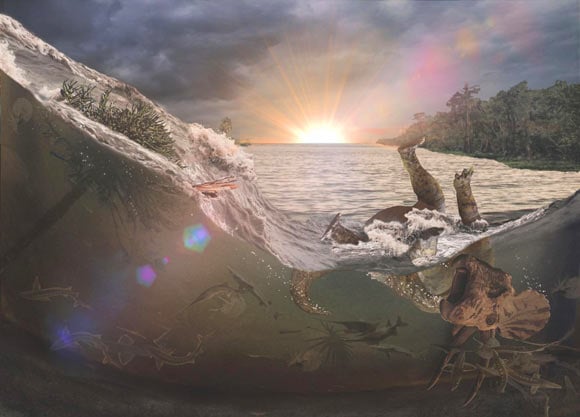
The Chicxulub impact 66 million years ago generated a tsunami-like wave in an inland sea that killed and buried fish, mammals, insects and a Triceratops, the first victims of a cataclysm that led to Earth’s last mass extinction. Image credit: Robert DePalma.
University of Kansas researcher Robert DePalma and his colleagues determined that the Tanis fish could not have been stranded and then buried by a typical tsunami, a single wave that would have reached this previously unknown arm of the Western Interior Seaway no less than 10 to 12 hours after the Chicxulub impact 1,864 miles (3,000 km) away, if it didn’t peter out before then.
“The tektites — glass beads formed in the atmosphere from rock melted by the impact — would have rained down within 45 min to an hour of the impact, unable to create mudholes if the seabed had not already been exposed,” the paleontologists said.
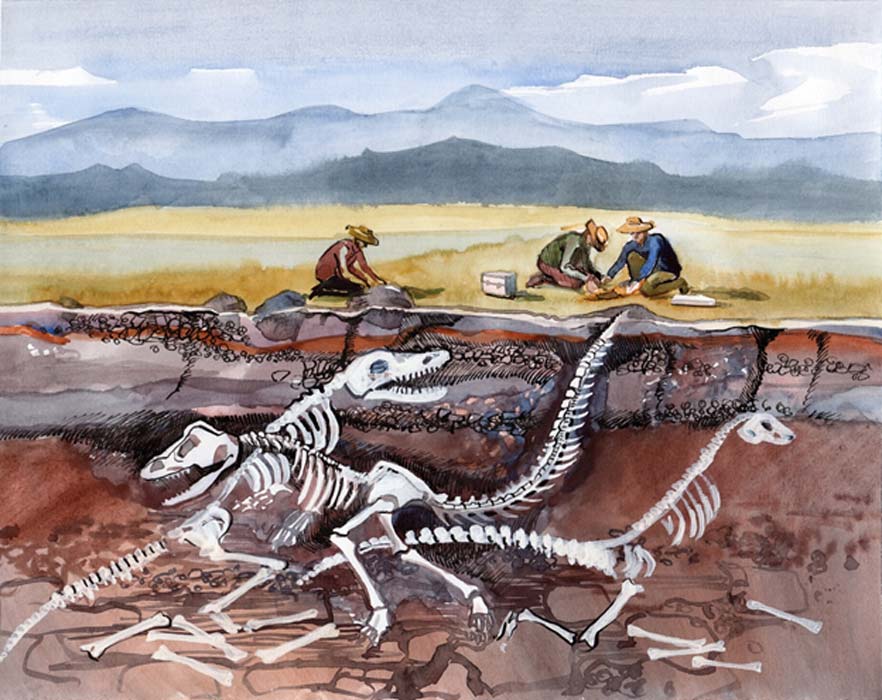
“Instead, seismic waves likely arrived within 10 min of the impact from what would have been the equivalent of a magnitude 10 or 11 earthquake, creating a seiche (standing wave) in the inland sea that is similar to water sloshing in a bathtub during an earthquake.”
“The seismic waves start arising within 9-10 min of the impact, so they had a chance to get the water sloshing before all the spherules had fallen out of the sky,” said Professor Mark Richards, from the University of California, Berkeley and the University of Washington.
“These spherules coming in cratered the surface, making funnels — you can see the deformed layers in what used to be soft mud — and then rubble covered the spherules. No one has seen these funnels before.”
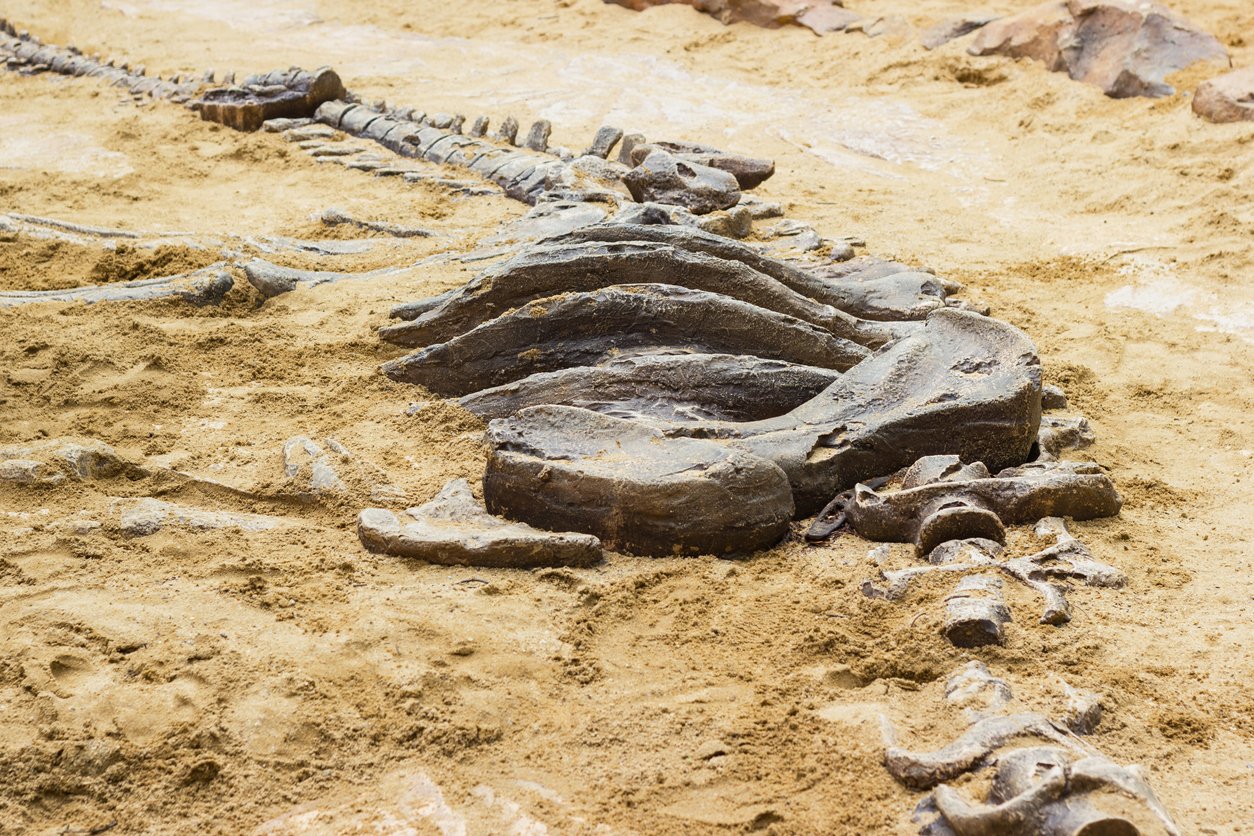
“The tektites would have come in on a ballistic trajectory from space, reaching terminal velocities of between 100 and 200 mph (161-322 kmh),” said University of California, Berkeley’s Professor Walter Alvarez.
“A tangled mass of freshwater fish, terrestrial vertebrates, trees, branches, logs, marine ammonites and other marine creatures was all packed into this layer by the inland-directed surge,” DePalma said.
“Timing of the incoming ejecta spherules matched the calculated arrival times of seismic waves from the impact, suggesting that the impact could very well have triggered the surge.”
Before the surge arrived, acipenseriform fish (sturgeon) at the Tanis site already had inhaled spherules ejected from the impact.
“The fish were buried quickly, but not so quickly they didn’t have time to breathe the ejecta that was raining down to the river,” said University of Kansas Professor David Burnham.
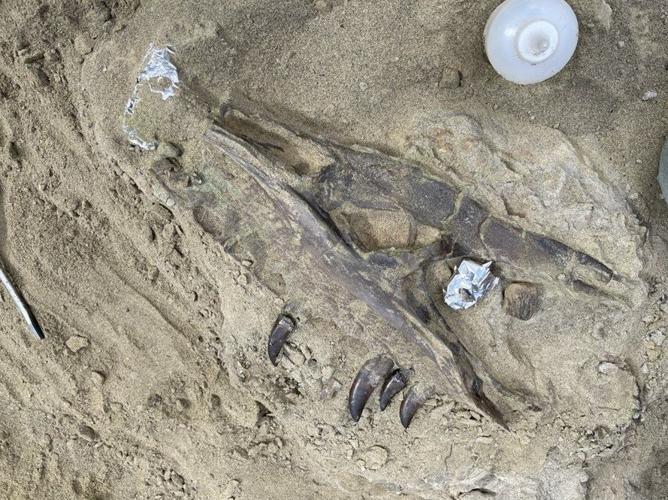
“These fish weren’t bottom feeders, they breathed these in while swimming in the water column. We’re finding little pieces of ejecta in the gill rakers of these fish, the bony supports for the gills. We don’t know if some were killed by breathing this ejecta, too.”
The number and quality of preservation of the fossils at the site are such that the team dubs it the ‘Lagerstätte of the KT event’ — a landmark sedimentary deposit with exceptionally intact specimens.
“This is especially true as the fish are cartilaginous, not bony, and are less prone to fossilization,” Professor Burnham noted.
“The sedimentation happened so quickly everything is preserved in 3D — they’re not crushed. It’s like an avalanche that collapses almost like a liquid, then sets like concrete. They were killed pretty suddenly because of the violence of that water. We have one fish that hit a tree and was broken in half.”
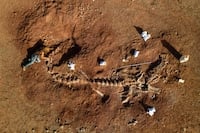
Indeed, the Tanis site contains many hundreds of articulated ancient fossil fish killed by the Chicxulub impact’s aftereffects and is remarkable for the biodiversity it reveals alone.
“At least several appear to be new species, and the others are the best examples known of their kind,” DePalma said.
“The fossil trove fills a void in scientific knowledge with vivid new detail,” Professor Burnham said.
“We’ve understood that bad things happened right after the impact, but nobody’s found this kind of smoking-gun evidence. People have said, ‘We get that this blast killed the dinosaurs, but why don’t we have dead bodies everywhere?’ Well, now we have bodies. They’re not dinosaurs, but I think those will eventually be found, too.”
Source: sci.news








